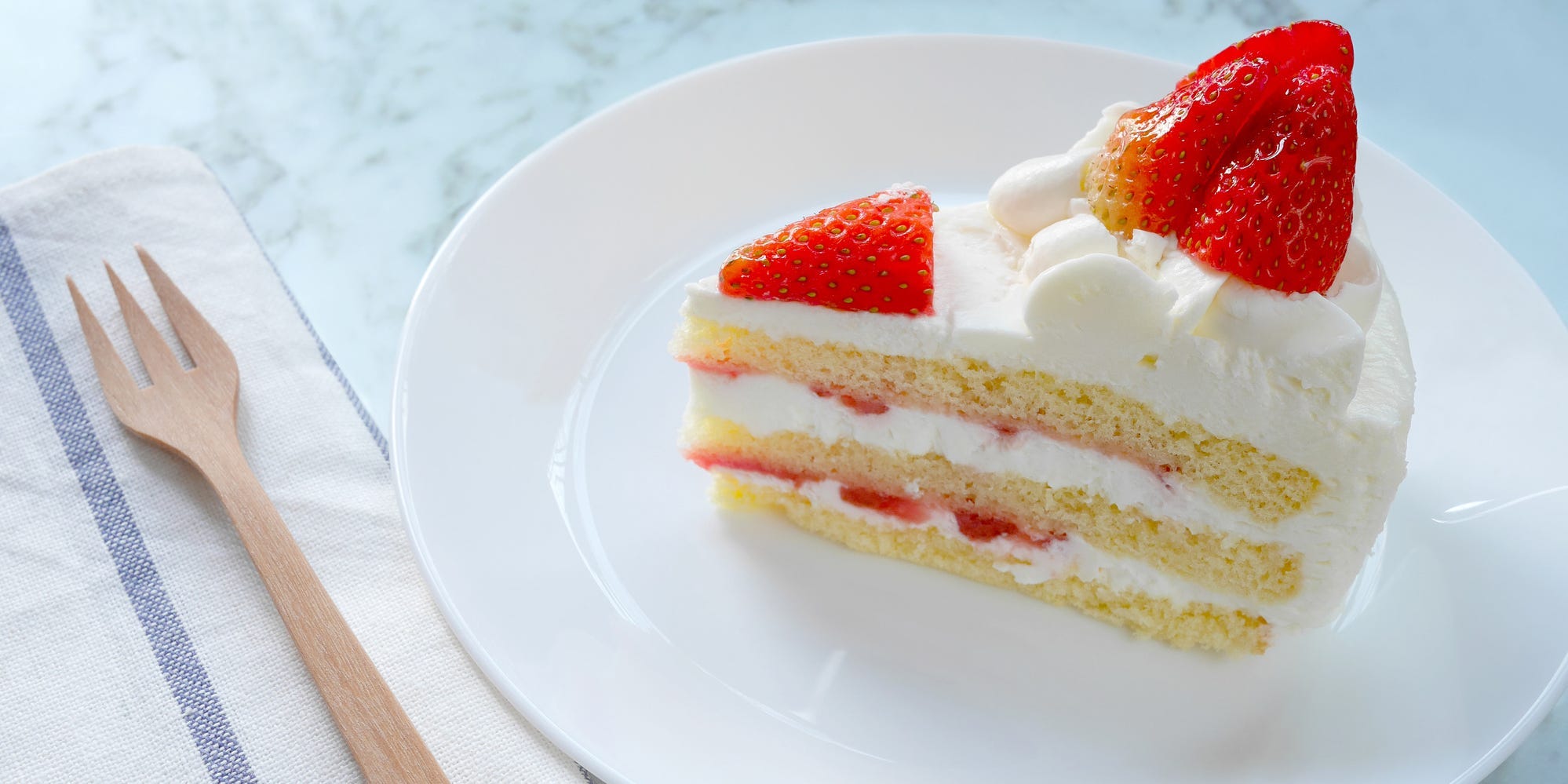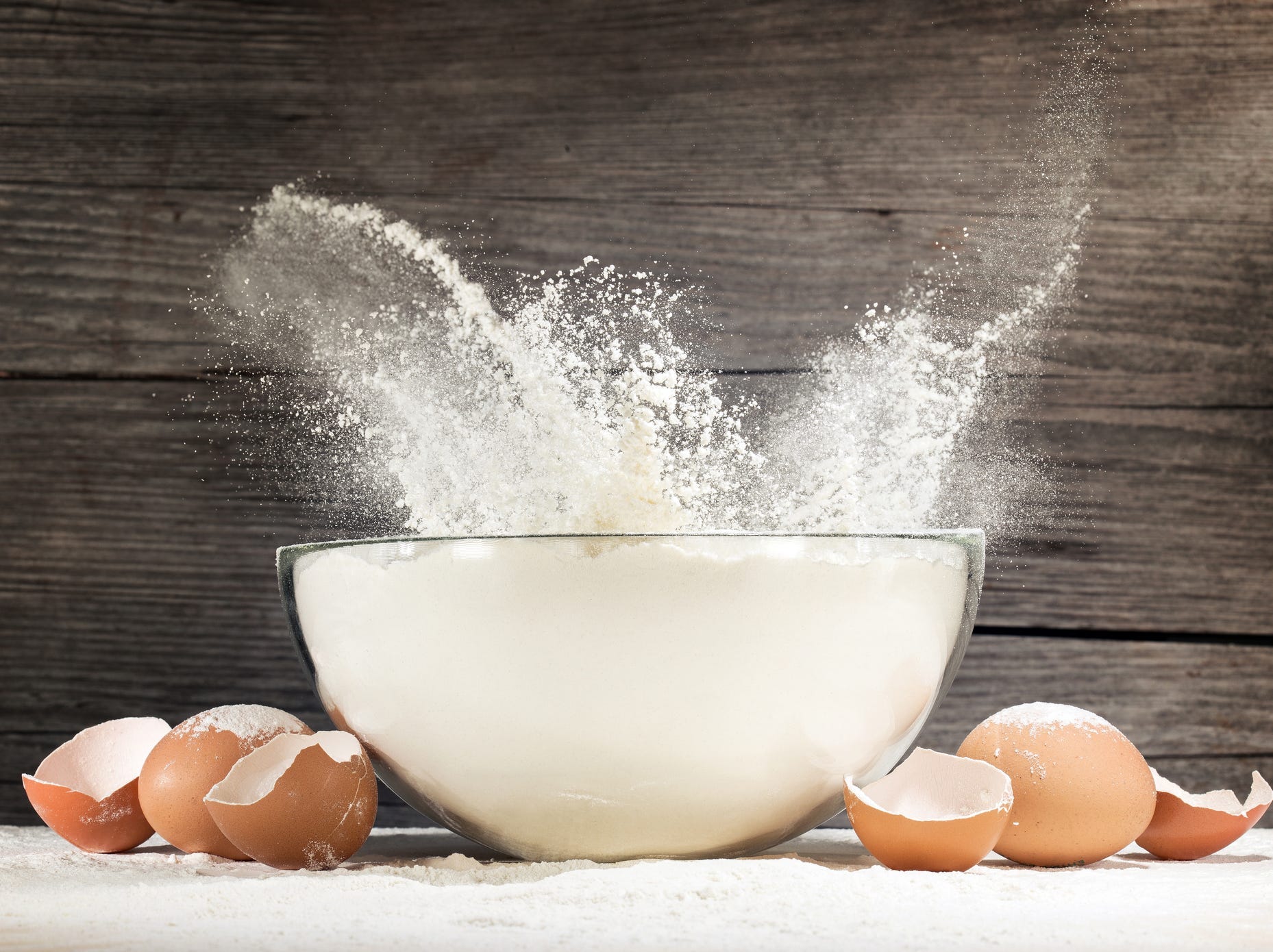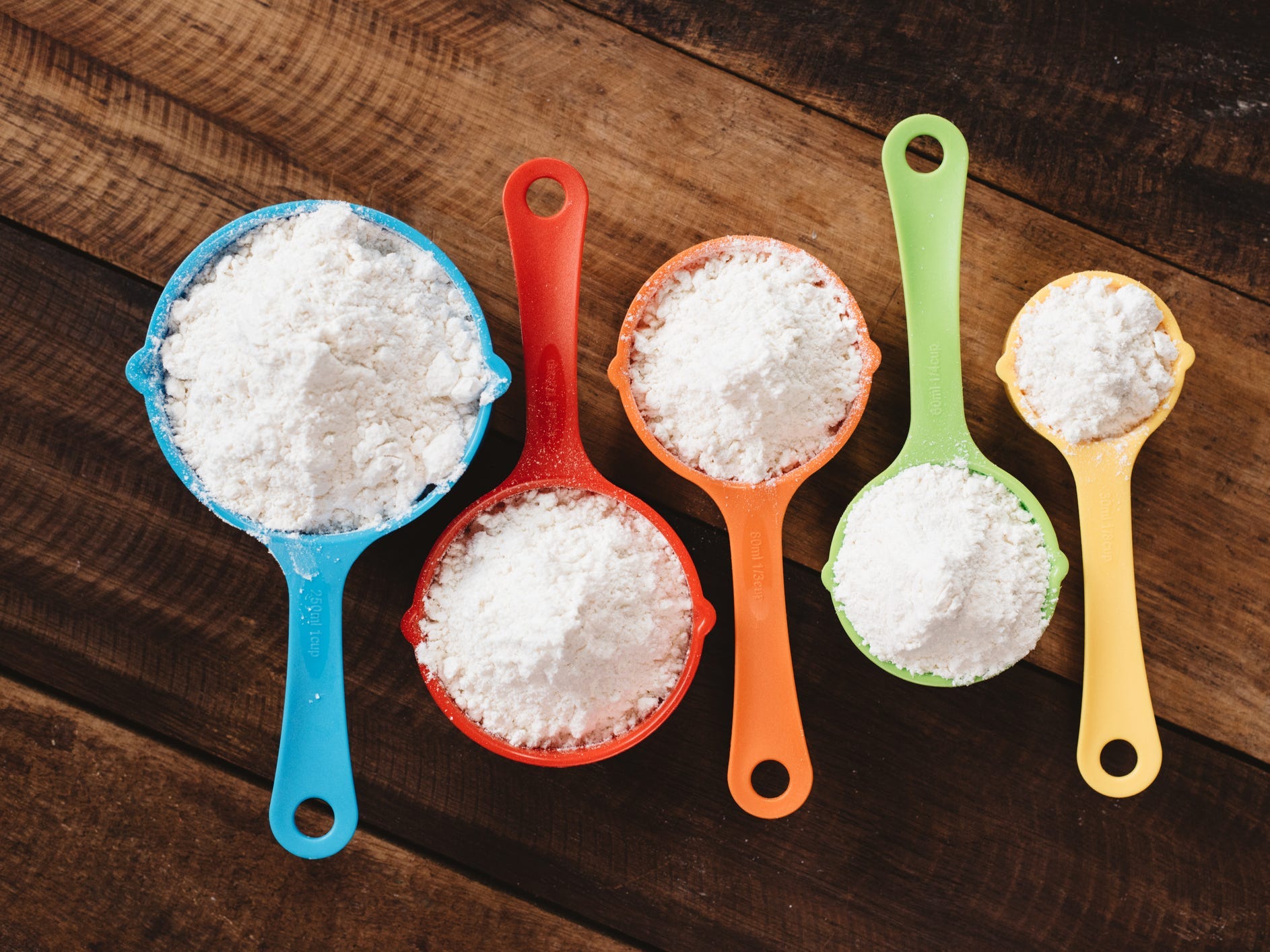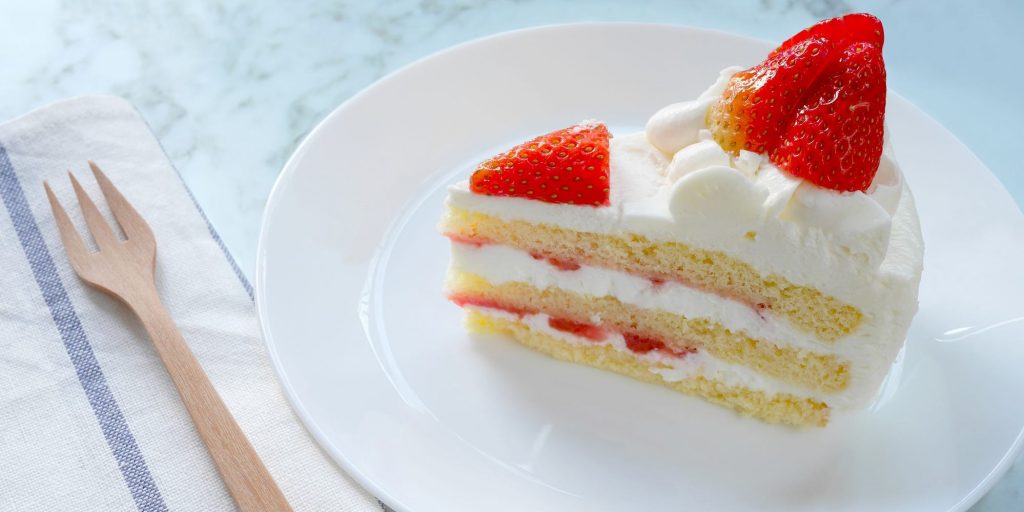
p_saranya/Getty Images
- Cake flour plays an essential role in creating a light and airy texture in cakes and pastries.
- The protein content and gluten structure of cake flour is lower than all-purpose flour.
- You can substitute cake flour using all-purpose flour plus cornstarch in a pinch.
- Visit Insider's Home & Kitchen Reference library for more stories.
Ready to whip up a delicious cake with the most beautiful crumb? Before you mix the batter, pull the cake out of the oven, and get to frosting, it's important to understand the type of flour to use for best results.
"All flour is not created equal," says Samantha Mayfair, wedding cake baker and owner of Samantha Mayfair Cakes. "Protein content, consistency, and whether it's bleached or unbleached will vary substantially."
For some recipes, not just any type of flour will suffice. Many cake recipes, along with pastries and biscuits, call for cake flour because of the texture it creates, but don't let that intimidate you if you've never used it before.
Below, you'll find all the details on how cake flour works, plus the easy way to make a substitute if you don't have any on hand at home.
What is cake flour?

~UserGI15966731/Getty Images
While it may sound like a hard-to-find ingredient, cake flour can be found in the baking aisle at most grocery stores. Its main job is to create structure in a bake, while still offering an indulgent consistency.
"Cake flour provides structure to baked goods, just like regular all-purpose flour," says Mayfair. "However, because it is milled from soft wheat, cake flour has a lower protein content and a finer consistency, giving baked goods a lighter and more tender texture."
When you add flour while baking, the protein in the flour is transformed into gluten. The more the gluten develops, the sturdier the bake will be. Because cake flour has less protein in it, less gluten can develop, so the final structure of your treat will be light and airy.
Cake flour vs. all-purpose flour
If all-purpose flour is always your go-to, there's no shame in that. But it is important to recognize that using these flours cup for cup may not produce the same results.
Cake flour and all-purpose flour each have different protein contents and gluten levels, ultimately producing different results. "More protein means more gluten, which results in more structure and firmer texture," says Mayfair. "Cake flour is milled to a finer consistency, which changes how the product absorbs liquids and fats."
If you're baking something that doesn't need to be terribly sturdy, then cake flour is your best choice. If your bake needs more structure and support, meaning higher protein and more gluten formation, then all-purpose flour is the way to go.
There are even more types of flour out there with varying protein contents. This handy chart breaks them all down and tells you when to opt for each.
| Flour type | Protein content | Gluten level | Texture created | Best used for |
| Cake flour | 6-8% | Low | Light, airy, tender | Cakes, pastries |
| Pastry flour | 9-10% | Low | Light, tender, crumbly | Pie crust, biscuits |
| All-purpose flour | 10-12% | Medium | Balanced structure | Cookies, quick breads, everyday baking |
| Bread flour | 12-14% | High | Dense, chewy | Breads, pizzas |
| Whole wheat flour | 14-15% | Very high | Dense, rich | Breads, muffins |
How to substitute cake flour

Mohd Hafiez Mohd Razali / EyeEm/Getty Images
If you don't have cake flour on hand, a simple substitution will do the trick. By combining all-purpose flour with cornstarch, you'll be on your way to a light, airy cake in no time.
According to Mayfair, the cornstarch in the mixture inhibits gluten formation from the all-purpose flour. "You're effectively achieving the same result as the lower-protein cake flour," she says. To be extra sure the mixture acts the same, you can also aerate your substitute by sifting it, ultimately adding extra air for lightened texture.
Can I just use entirely all-purpose flour instead?
Yes, just keep in mind the texture of your bake will differ slightly.
"All-purpose flour [alone] won't give you that soft, airy result," notes Mayfair. "Instead, you'll end up with a cake that's denser, with a firmer consistency and a tighter crumb."
Insider's takeaway
While some recipes specifically call for cake flour for a reason, it all boils down to the texture you're hoping to achieve. With a lower protein content and less gluten formation, cake flour makes for light and tender cakes and pastries. However, if you need to achieve a bake with more structure, all-purpose flour, or a mixture of all-purpose flour and cornstarch will still do the trick.
If all you have on hand is AP flour, replacing two tablespoons per cup with cornstarch will help inhibit gluten formation, giving your bake a lighter texture similar to cake flour.
Dit artikel is oorspronkelijk verschenen op z24.nl
